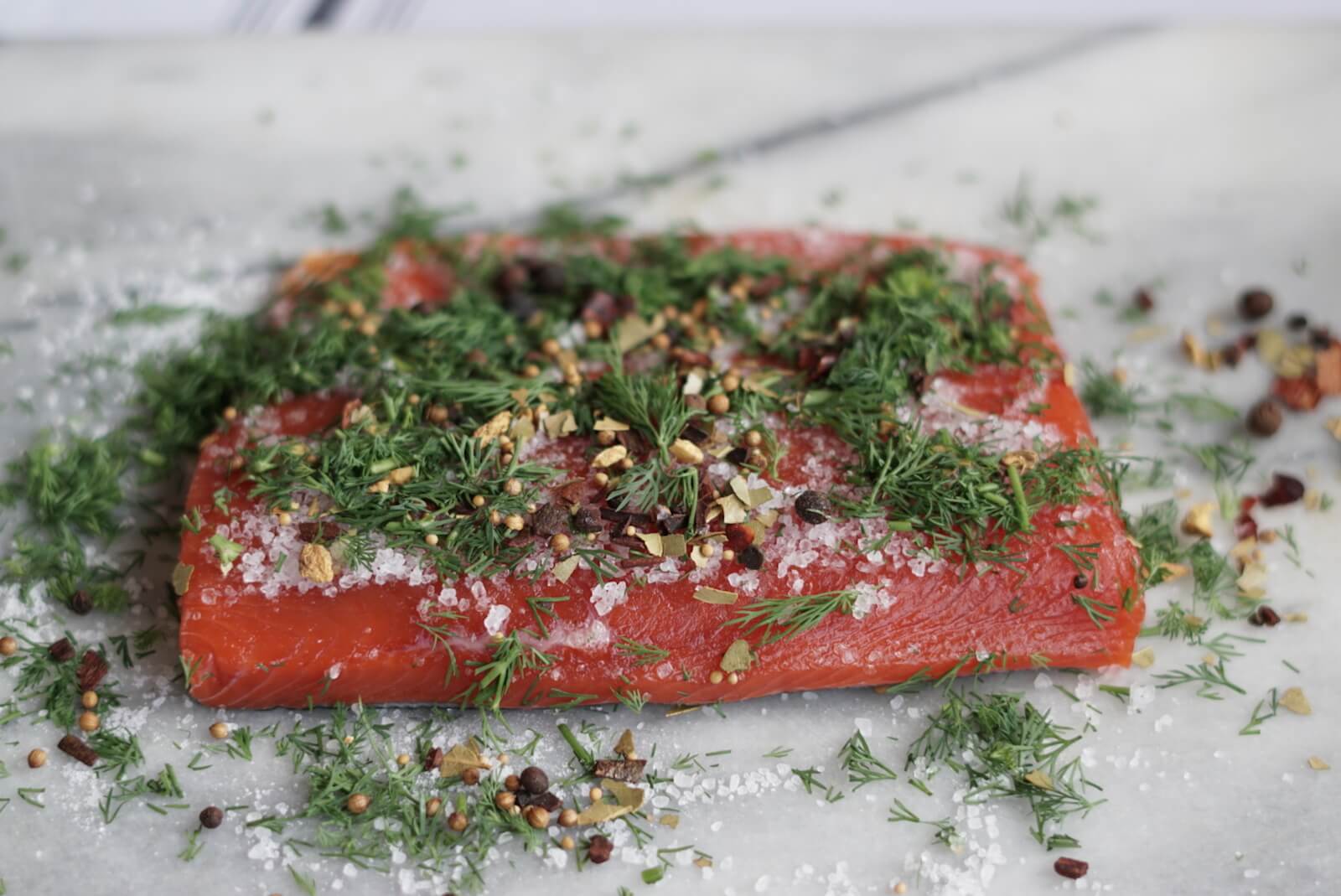In a region surrounded by cold oceans and seas, it is no wonder that seafood is a vital part of the Nordic diet. From salmon to saltwater eels to whales, fishing provided bountiful supplies of protein to last all winter long.
While hunting larger game like moose and deer was also practiced, hunting rights for a large part of Nordic history were reserved only for those of nobility or royalty.
Instead, the common man had to rely on knowledge of the animal migration patterns of the oceans and rivers. One of the most predictable and reliable animal kingdom migrations is that of the wild salmon.
On top of a plentiful supply, seafood and freshwater fish are also easy to preserve and store for winter.
One of Sweden's more iconic recipes is gravlax, a salt and sugar cured salmon, perfect for storing for long winters.
The name can be translated to "buried salmon" or even "grave salmon" which refers to the medieval method of curing the raw fish by burying it in the sandy soil to ferment, often right on the beach in sand just above the high tide level.
While in the past gravlax was a long term curing method, today most gravlax recipes only call for at most 24 hours or so of curing.
It is also far from a Swedish specific recipe and you can find similar versions in Norway (gravlaks), Iceland (graflax), Finland (graavilohi), and Denmark (gravad laks).
This curing method also isn't reserved solely for salmon and is used to cure everything from trout in Norway to shark in Iceland, though the shark is prepared in the more medieval style with it being buried directly in sand.
Unfortunately, due to environmental issues with farmed salmon in the Nordic region, opting to try this recipe with a different type of fish or salmon from another region of the world might be the more responsible choice.
Beyond a choice in fish, the gravlax can also vary based on the spices used and added to the cure. In all most all cases you will find at least fresh ground pepper and dill.

Nordic Gravlax
One of the Nordic's most iconic dishes, gravlax has evolved from ancient fermenting methods
1 lb (.5kg) salmon fillet (or trout) with skin on
1⁄4 cup salt
1⁄4 cup sugar
Peppercorn, fennel seeds, coriander seeds, and/or fresh dill (to taste)
Prepare the fish but removing the pin bones and patting the fillet dry.
Mix the cure and spread evenly across all sides of the fillet. Wrap tightly in plastic wrap and place in the refrigerator with something heavy on top to drive more water out.
For best results, allow to cure for 24 hours before washing the cure mixture off. Allow the gravlax up to another 24 hours to rest, without the cure mixture, to allow the curing effect to move evenly spread throughout the fish.
Slice and serve as a standalone dish or alongside other traditional Nordic dishes.
-
Nordic
|
Dairy Free
|
Gluten Free



